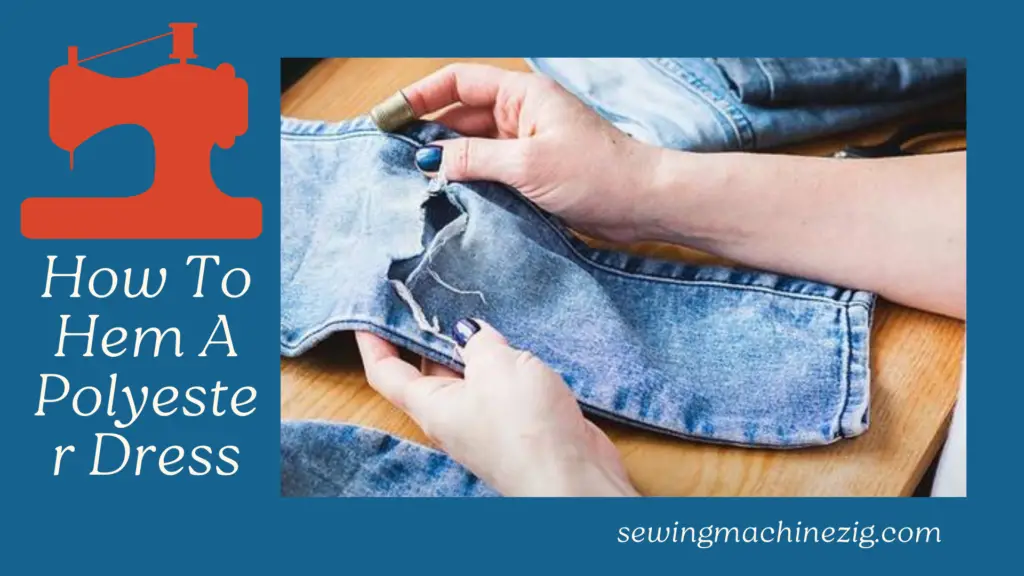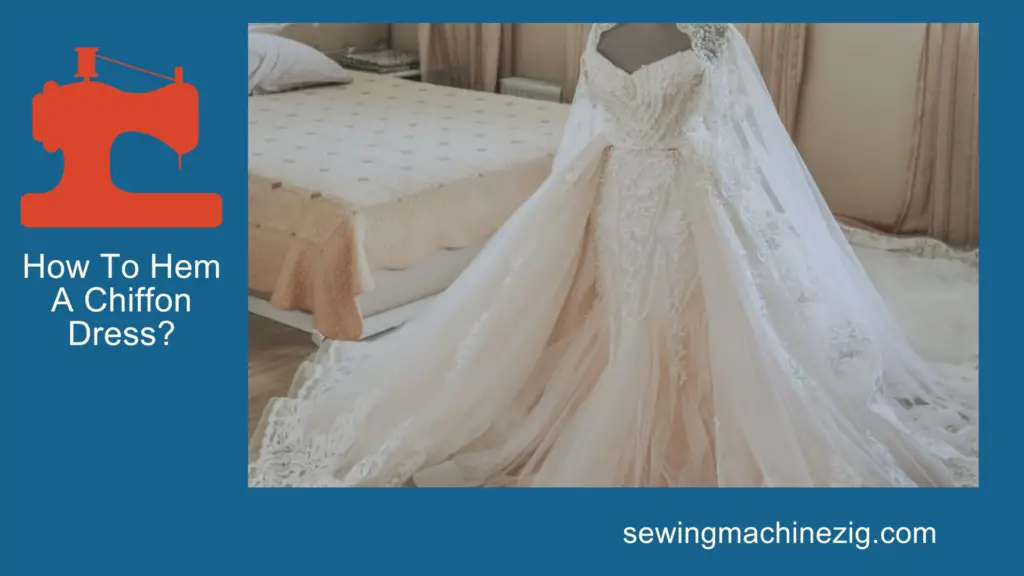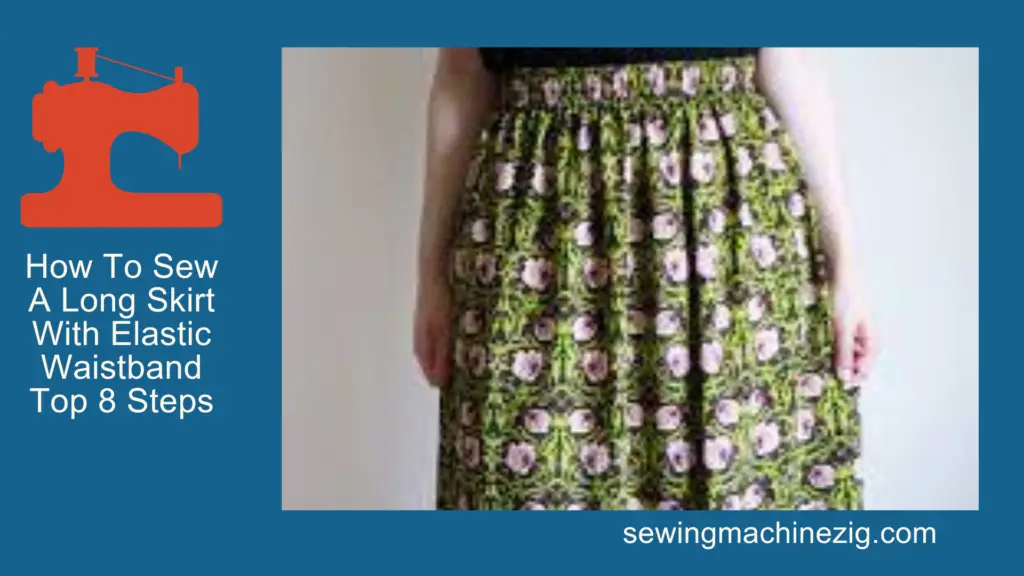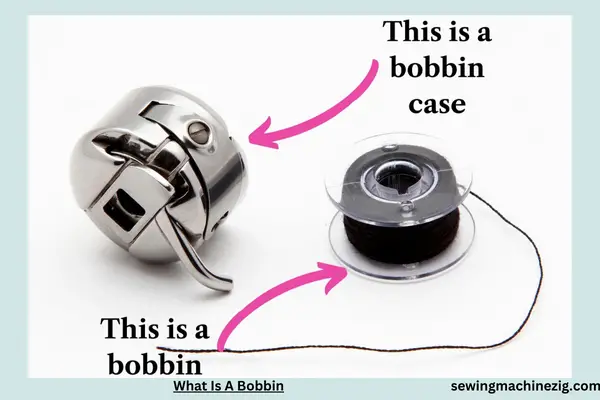
Ever plunged into the world of sewing and encountered the enigmatic term “What Is A Bobbin” leaving you feeling like you’ve stumbled upon a sewing secret code? We get the bobbin-related bewilderment! Unraveling the mystery of what exactly a bobbin is can be akin to navigating uncharted stitching territory.
Fear not! In this guide, “What Is A Bobbin” We’ll demystify the essence of a bobbin, making it an accessible concept for every sewing enthusiast. Whether you’re a novice or a seasoned seamstress, let’s thread through the basics together, ensuring your sewing journey is free from bobbin-induced confusion. Say goodbye to uncertainty, and let’s sew with clarity!
What Is A Bobbin Detailed Answer
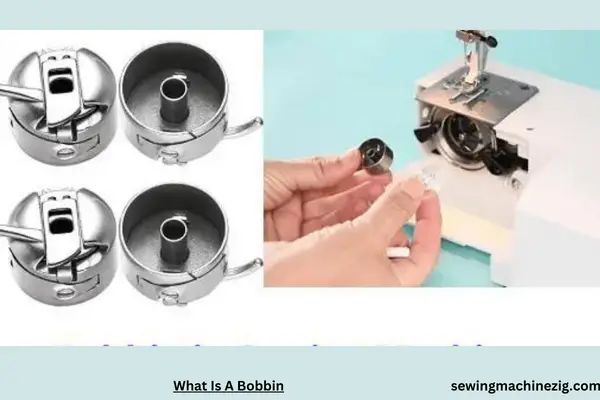
In the intricate world of sewing, the bobbin plays a crucial role, quietly contributing to the formation of each stitch and the overall success of your sewing projects. If you’re relatively new to sewing or just getting acquainted with the various components of a sewing machine, you might find yourself asking, “What Is A Bobbin?”
In this exploration, “What Is A Bobbin“We’ll unravel the mysteries of the bobbin, understand its significance, and delve into the essential role it plays in the art of sewing.
Understanding the Basics:
A bobbin is a small, cylindrical device that holds the lower thread in a sewing machine. While the upper thread is threaded through the needle, the lower thread is wound onto the bobbin. Together, these two threads intertwine to form the stitches that create seams, hems, and decorative elements on fabric.
Types of Bobbins:
Bobbins come in various shapes and sizes, and the type of bobbin your sewing machine uses is determined by the machine’s make and model. The two most common types of bobbins are:
- Class 15 Bobbins: These bobbins are flat on one side and have a slight curve on the other. They are commonly used in many home sewing machines.
- Class 66 Bobbins: Also known as drop-in bobbins, these have a distinct shape with a flat top and bottom. They are often used in sewing machines with a drop-in bobbin case.
It’s essential to use the correct type of bobbin for your specific sewing machine to ensure smooth operation and stitch quality.
The Bobbin’s Role in Stitch Formation:
Understanding how the bobbin works in tandem with the upper thread is fundamental to comprehending its role in stitch formation. When you start sewing, the needle, threaded with the upper thread, moves up and down. On its downward stroke, the needle passes through the fabric, and the motion creates a loop.
Simultaneously, the bobbin thread, positioned below the fabric, is pulled upward through a tiny space in the throat plate by a rotating hook. The needle and bobbin threads meet in the middle of the fabric, intertwining to form a secure and neat stitch.
This process is repeated rapidly as you guide the fabric through the machine, resulting in a continuous line of stitches that make up the seams or designs on your project.
Winding the Bobbin:
Before you can start sewing, it’s crucial to ensure your bobbin is properly wound with thread. Most modern sewing machines have a built-in bobbin winding mechanism, making the process relatively straightforward. Here’s a step-by-step guide on how to wind a bobbin:
- Place the Thread Spool:
- Start by placing your thread spool on the designated spool pin on your sewing machine. Ensure the spool cap is in place to hold the thread securely.
- Thread the Machine:
- Follow the threading path indicated on your machine to thread the upper thread. Pass the thread through the necessary guides, tension discs, and the bobbin winding tension disc.
- Prepare the Bobbin:
- Place an empty bobbin on the bobbin winding spindle, which is typically located on the top of your sewing machine.
- Engage the Bobbin Winding Mechanism:
- Some machines have a separate bobbin winding mode, while others may require you to disengage the sewing mechanism. Check your machine’s manual for specific instructions.
- Thread the Bobbin:
- Take the end of the upper thread and wind it around the bobbin a few times to secure it. Place the bobbin on the bobbin winding spindle, ensuring it is firmly seated.
- Start the Bobbin Winding:
- Depress the foot pedal or press the start button, depending on your machine. The bobbin will start winding with thread. Some machines may have an automatic stop when the bobbin is full.
- Cut the Thread:
- Once the bobbin is adequately filled, cut the thread, and remove the bobbin from the winding spindle.
Installing the Bobbin:
After you’ve wound the bobbin, the next step is to install it in the bobbin case or bobbin holder, depending on your sewing machine. Here’s a general guide on how to install a bobbin:
- Locate the Bobbin Case:
- Open the bobbin case or bobbin holder compartment on your sewing machine. Refer to your machine’s manual to identify the correct location.
- Insert the Bobbin:
- Hold the bobbin with the thread unwinding counterclockwise. Place the bobbin into the bobbin case, following the directional arrows indicated on the case.
- Thread the Bobbin Case:
- Guide the thread into the bobbin tension slot or follow the threading path specified by your machine’s manual. Make sure the thread is securely in place.
- Draw Up the Bobbin Thread:
- Hold the end of the upper thread and turn the handwheel toward you to lower the needle. Gently pull the upper thread, and the bobbin thread should come up through the needle plate.
- Secure the Bobbin Thread:
- Pull both the upper and bobbin threads toward the back of the machine, leaving a few inches of thread tails. You are now ready to start sewing.
Common Issues and Troubleshooting:
While working with bobbins, you may encounter a few common issues. Here are some troubleshooting tips:
Bobbin Tension: If the bobbin thread is too loose or too tight, adjust the bobbin tension. Refer to your machine’s manual for guidance on adjusting tension settings.
Bobbin Thread Breaks: Check for any snags or knots in the bobbin thread. Ensure the bobbin is wound smoothly and without any tangles.
Bobbin Installation: Make sure the bobbin is inserted in the correct direction and follows the threading path specified by your machine.
Cleaning the Bobbin Area: Periodically clean the bobbin case and surrounding areas to remove lint or debris that may affect the smooth operation of the bobbin.
Summary:
In summary, “What Is A Bobbin” A bobbin is a small yet integral component of a sewing machine, responsible for holding the lower thread that, when combined with the upper thread, creates the stitches in your sewing projects. Understanding how to wind, install, and troubleshoot bobbin-related issues is fundamental for a smooth sewing experience.
As you embark on your sewing journey, consider the bobbin as your silent partner in crafting beautiful and precise stitches. Take the time to familiarize yourself with your machine’s specific bobbin requirements, and you’ll find that mastering the art of bobbin adds a layer of finesse to your sewing projects. So, thread your bobbins with care, install them thoughtfully, and let the magic of stitching unfold with each pass of the needle.
What Are The Different Types Of Bobbins
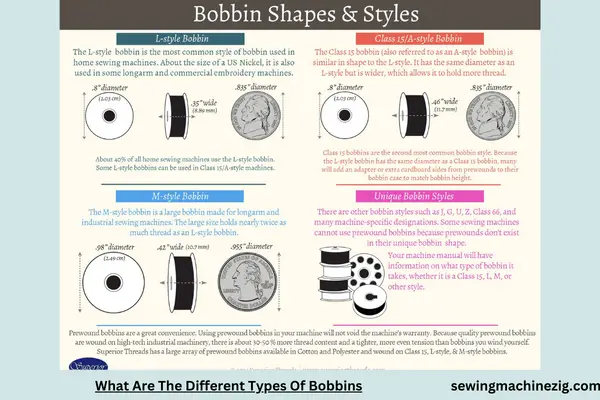
In the world of sewing, the humble bobbin is a tiny yet indispensable component that quietly contributes to the magic of creating stitches. If you’re new to sewing or still acquainting yourself with the intricacies of a sewing machine, you might find yourself pondering, “What Is A Bobbin?” Let’s embark on a journey to demystify the bobbin, understand its vital role, and explore the diverse types that exist.
At its essence, a bobbin is a small, cylindrical device that holds the lower thread in a sewing machine. While the upper thread, threaded through the needle, dances gracefully across the fabric, the lower thread, neatly wound onto the bobbin, plays a crucial role in forming stitches that bring your sewing projects to life.
The Basics of Bobbins:
Bobbins come in various shapes, sizes, and materials, each designed to complement the specific make and model of a sewing machine. The two primary types of bobbins are the Class 15 and Class 66 bobbins.
- Class 15 Bobbins:
- These bobbins have a flat side and a slight curve on the other. They are commonly used in many home sewing machines, contributing to the smooth and efficient functioning of the sewing mechanism.
- Class 66 Bobbins:
- Also known as drop-in bobbins, these have a distinct flat top and bottom. They are frequently used in sewing machines with a drop-in bobbin case, offering ease of use and convenience.
Choosing the right type of bobbin for your sewing machine is essential to ensure proper operation and stitch quality.
The Role of the Bobbin in Stitch Formation:
To understand the significance of the bobbin, it’s crucial to grasp its role in tandem with the upper thread in forming stitches. As you guide your fabric through the machine, the needle, threaded with the upper thread, moves up and down. During its downward stroke, the needle pierces the fabric, creating a loop.
Simultaneously, the bobbin thread, situated below the fabric, is drawn upward through a tiny space in the throat plate by a rotating hook. The needle and bobbin threads meet in the middle of the fabric, intertwining to form a secure and neat stitch.
This harmonious dance between the upper and lower threads, facilitated by the bobbin, repeats rapidly, resulting in the formation of continuous stitches that define the seams, hems, and decorative elements on your sewing project.
Different Types of Bobbins:
While the fundamental purpose of all bobbins remains the same, their design and compatibility can vary. Here are some different types of bobbins, each serving specific purposes in the sewing realm:
- Metal Bobbins:
- Made of metal, these bobbins are known for their durability and sturdiness. They are often used in industrial sewing machines and can withstand heavy use.
- Plastic Bobbins:
- Crafted from plastic, these bobbins are lightweight and suitable for most home sewing machines. They come in various colors and may be transparent, allowing you to monitor the thread supply.
- Pre-Wound Bobbins:
- Pre-wound bobbins come already filled with thread, often in a matching color. These are convenient for quick project starts and reduce the need for manual bobbin winding.
- Bobbin Cases with Pigtail:
- Some bobbin cases feature a pigtail or a small extension that helps guide the thread through the case, ensuring smooth and even tension.
- Specialty Bobbins:
- Certain sewing machines may require specific bobbins designed for unique functions. Always refer to your machine’s manual for guidance on the appropriate bobbin type.
Winding the Bobbin:
Before you can embark on your sewing journey, ensuring your bobbin is properly wound with thread is paramount. Most modern sewing machines come equipped with a built-in bobbin winding mechanism, streamlining the process. Here’s a step-by-step guide on how to wind a bobbin:
- Place the Thread Spool:
- Start by placing your thread spool on the designated spool pin on your sewing machine. Secure it with the spool cap to prevent any unraveling.
- Thread the Machine:
- Follow the threading path indicated on your machine to thread the upper thread. Pass the thread through guides, tension discs, and the bobbin winding tension disc.
- Prepare the Bobbin:
- Place an empty bobbin on the bobbin winding spindle, typically located on the top of your sewing machine.
- Engage the Bobbin Winding Mechanism:
- Some machines have a separate bobbin winding mode, while others may require you to disengage the sewing mechanism. Refer to your machine’s manual for specific instructions.
- Thread the Bobbin:
- Secure the end of the upper thread by winding it around the bobbin a few times. Place the bobbin on the winding spindle, ensuring it’s seated securely.
- Start the Bobbin Winding:
- Depress the foot pedal or press the start button, depending on your machine. The bobbin will start winding with thread. Some machines may automatically stop when the bobbin is full.
- Cut the Thread:
- Once the bobbin is adequately filled, cut the thread and remove the bobbin from the winding spindle.
Installing the Bobbin:
With a freshly wound bobbin in hand, the next step is to install it in the bobbin case or bobbin holder of your sewing machine. Here’s a general guide on how to install a bobbin:
- Locate the Bobbin Case:
- Open the bobbin case or bobbin holder compartment on your sewing machine. Consult your machine’s manual to pinpoint the correct location.
- Insert the Bobbin:
- Hold the bobbin with the thread unwinding counterclockwise. Place it into the bobbin case, adhering to the directional arrows indicated on the case.
- Thread the Bobbin Case:
- Guide the thread into the bobbin tension slot or follow the threading path specified by your machine’s manual. Ensure the thread is securely in place.
- Draw Up the Bobbin Thread:
- Lower the needle by turning the handwheel toward you. Gently pull the upper thread, causing the bobbin thread to come up through the needle plate.
- Secure the Bobbin Thread:
- Pull both the upper and bobbin threads to the back of the machine, leaving a few inches of thread tails. Your machine is now ready for sewing.
Common Issues and Troubleshooting:
Working with bobbins may occasionally present challenges. Here are some common issues and troubleshooting tips:
- Bobbin Tension:
- If the bobbin thread is too loose or too tight, adjust the bobbin tension. Refer to your machine’s manual for guidance on adjusting tension settings.
- Bobbin Thread Breaks:
- Inspect the bobbin thread for any snags or knots. Ensure the bobbin is wound smoothly and without tangles.
- Bobbin Installation:
- Confirm that the bobbin is inserted in the correct direction and follows the threading path specified by your machine.
- Cleaning the Bobbin Area:
- Regularly clean the bobbin case and surrounding areas to remove lint or debris that may affect the smooth operation of the bobbin.
Summary:
In summary, a bobbin is a small yet mighty ally in the world of sewing, holding the lower thread that, when combined with the upper thread, brings stitches to life. Understanding the types of bobbins, how to wind them, install them, and troubleshoot common issues is pivotal for a seamless sewing experience.
As you delve into the art of sewing, consider the bobbin as your silent partner, diligently contributing to the creation of beautiful and precise stitches. Take the time to acquaint yourself with your machine’s specific bobbin requirements, and you’ll find that mastering the intricacies of the bobbin adds a layer of finesse to your sewing projects.
So, thread your bobbins with care, install them thoughtfully, and let the magic of stitching unfold with each pass of the needle. Happy sewing!
What Bobbin Does Singer 4452 Use
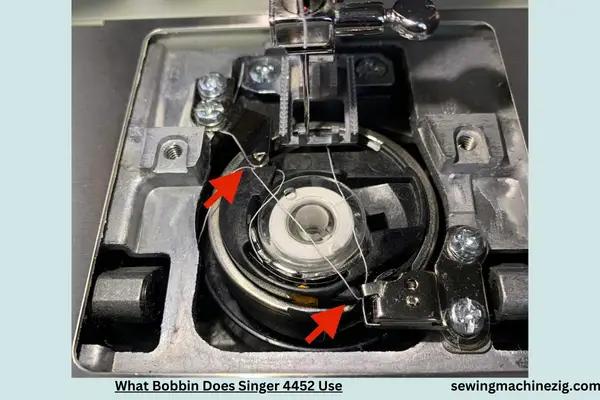
The Marvel of the Singer 4452:
The Singer 4452 is a powerhouse sewing machine, celebrated for its robust build, impressive speed, and versatility. Whether you’re a seasoned seamstress or a novice exploring the realms of sewing, this machine has likely become a cherished companion in your creative journey. Now, let’s shed light on the unsung hero in this tale – What Is A Bobbin.
Bobbin Basics:
A bobbin, though small in size, is a mighty force in the intricate dance of threads that creates the stitches on your fabric canvas. In the case of the Singer 4452, understanding the appropriate bobbin is key to ensuring the smooth operation and stitch quality that this machine is known for.
Identifying the Right Bobbin:
The Singer 4452, like many sewing machines, has specific requirements when it comes to bobbins. It is compatible with Class 15 bobbins, which have a flat side and a slight curve on the other. These bobbins are widely used in home sewing machines and are known for their versatility and ease of use.
While Class 15 bobbins share a common design, the material can vary. You can find them in both metal and plastic variations. The choice between metal and plastic bobbins often depends on personal preference and the specific needs of your sewing projects.
Why Class 15 Bobbins?
The choice of Class 15 bobbins for the Singer 4452 is not arbitrary but a thoughtful decision by Singer to enhance the user experience. Class 15 bobbins are readily available, making it convenient for users to find replacements or additional bobbins when needed. This accessibility ensures that you can always have a fresh bobbin at the ready for your creative endeavors.
Winding the Bobbin for Singer 4452:
Now that we’ve identified the appropriate bobbin for the Singer 4452 let’s delve into the process of winding the bobbin, an essential step to prepare your machine for stitching.
- Prepare Your Thread:
- Start by selecting the thread color you wish to wind onto the bobbin. Ensure the spool is securely placed on the spool pin.
- Thread the Machine:
- Follow the threading path indicated on your Singer 4452 to thread the upper thread. Pass the thread through the necessary guides, tension discs, and finally, the bobbin winding tension disc.
- Place the Bobbin:
- Take an empty Class 15 bobbin and place it on the bobbin winding spindle, ensuring it is seated securely.
- Engage the Bobbin Winding Mechanism:
- Some sewing machines, including the Singer 4452, have a specific setting for bobbin winding. Check your machine’s manual to understand how to engage this setting. Once engaged, the machine will disengage the needle and engage the bobbin winding mechanism.
- Start the Winding Process:
- Press the foot pedal or start button to commence the bobbin winding process. The machine will wind the thread evenly onto the bobbin. Some machines may have an automatic stop feature when the bobbin is full.
- Cut the Thread:
- Once the bobbin is adequately filled, cut the thread and remove the bobbin from the winding spindle.
Disengage the Bobbin Winding Mechanism:
- Return the machine to its regular sewing setting by disengaging the bobbin winding mechanism. Ensure the needle is re-engaged for regular sewing.
Installing the Bobbin:
With a freshly wound bobbin in hand, the next step is to install it in the bobbin case of your Singer 4452. Here’s a step-by-step guide:
- Locate the Bobbin Case:
- Open the bobbin case cover on your Singer 4452. The location of the bobbin case may vary slightly depending on your machine’s model, but it is typically near the needle plate.
- Insert the Bobbin:
- Hold the wound bobbin with the thread unwinding counterclockwise. Place it into the bobbin case, ensuring it adheres to the directional arrows indicated on the case.
- Thread the Bobbin Case:
- Guide the thread into the bobbin tension slot or follow the threading path specified by your Singer 4452’s manual. Make sure the thread is securely in place.
- Draw Up the Bobbin Thread:
- Lower the needle by turning the handwheel toward you. Gently pull the upper thread, causing the bobbin thread to come up through the needle plate.
- Secure the Bobbin Thread:
- Pull both the upper and bobbin threads toward the back of the machine, leaving a few inches of thread tails. Your Singer 4452 is now ready for sewing.
Common Issues and Troubleshooting:
As with any sewing machine, you may encounter occasional hiccups. Here are some common bobbin-related issues and how to troubleshoot them:
- Bobbin Tension:
- If the bobbin thread is too loose or too tight, adjust the bobbin tension. Consult your Singer 4452 manual for guidance on adjusting tension settings.
- Bobbin Thread Breaks:
- Inspect the bobbin thread for any snags or knots. Ensure the bobbin is wound smoothly and without tangles.
- Bobbin Installation:
- Confirm that the bobbin is inserted in the correct direction and follows the threading path specified by your machine.
- Cleaning the Bobbin Area:
- Regularly clean the bobbin case and surrounding areas to remove lint or debris that may affect the smooth operation of the bobbin.
Summary:
In the tapestry of sewing, the bobbin is a subtle yet vital thread that weaves together the intricate patterns of your creations. For the Singer 4452, the Class 15 bobbin is the chosen companion, ensuring a harmonious dance of threads and stitches. By understanding the nuances of your machine’s bobbin requirements, you empower yourself to embark on sewing adventures with confidence. “What Is A Bobbin“
As you wind bobbins, install them, and breathe life into your Singer 4452, savor the magic of creation. The perfect stitch begins with the right bobbin, and with each pass of the needle, you contribute to the rich tapestry of your sewing journey. So, embrace the artistry of stitching, and may your Singer 4452 and its faithful bobbin companion be your guides in the realm of endless possibilities. Happy sewing!
Conclusion
In unraveling the intricacies of sewing, the humble bobbin emerges as a crucial player in the textile symphony. As the silent partner to the sewing machine’s melody, a bobbin holds the key to stitch formation. Appreciating its role is akin to understanding the backbone of any sewing endeavor.
So, whether you’re a seasoned seamstress or an aspiring stitcher, recognizing the significance of the bobbin weaves a thread of comprehension through the rich tapestry of sewing craftsmanship. “What Is A Bobbin“
FAQs: What Is a Bobbin?
Q1: What exactly is a bobbin in the context of sewing?
A1: A bobbin is a small, cylindrical device in sewing that holds the lower thread and is inserted into the bobbin case or shuttle of a sewing machine.
Q2: How does a bobbin contribute to the sewing process?
A2: The bobbin, loaded with thread, works in conjunction with the upper thread to create stitches, forming the foundation of the stitches on the underside of fabric.
Q3: Are bobbins universal, or do they vary based on sewing machine models?
A3: Bobbins come in different sizes and styles, often specific to the sewing machine model. It’s crucial to use the correct bobbin recommended by the machine’s manufacturer. “What Is A Bobbin“
Q4: Can bobbins be pre-wound with thread or are they typically filled during the sewing process?
A4: Both options exist. Some sewers prefer pre-wound bobbins for convenience, while others prefer winding their bobbins with the desired thread during the sewing process. “What Is A Bobbin“
Q5: Are there different types of bobbins for hand sewing and machine sewing?
A5: Yes, hand-sewing bobbins may differ in size and shape from machine-sewing bobbins. Machine bobbins are specifically designed for use with sewing machines. “What Is A Bobbin“
Q6: How do you load a bobbin into a sewing machine?
A6: Loading a bobbin involves placing it into the bobbin case or shuttle, following the machine’s threading path, and ensuring the thread unwinds in the correct direction. “What Is A Bobbin“

